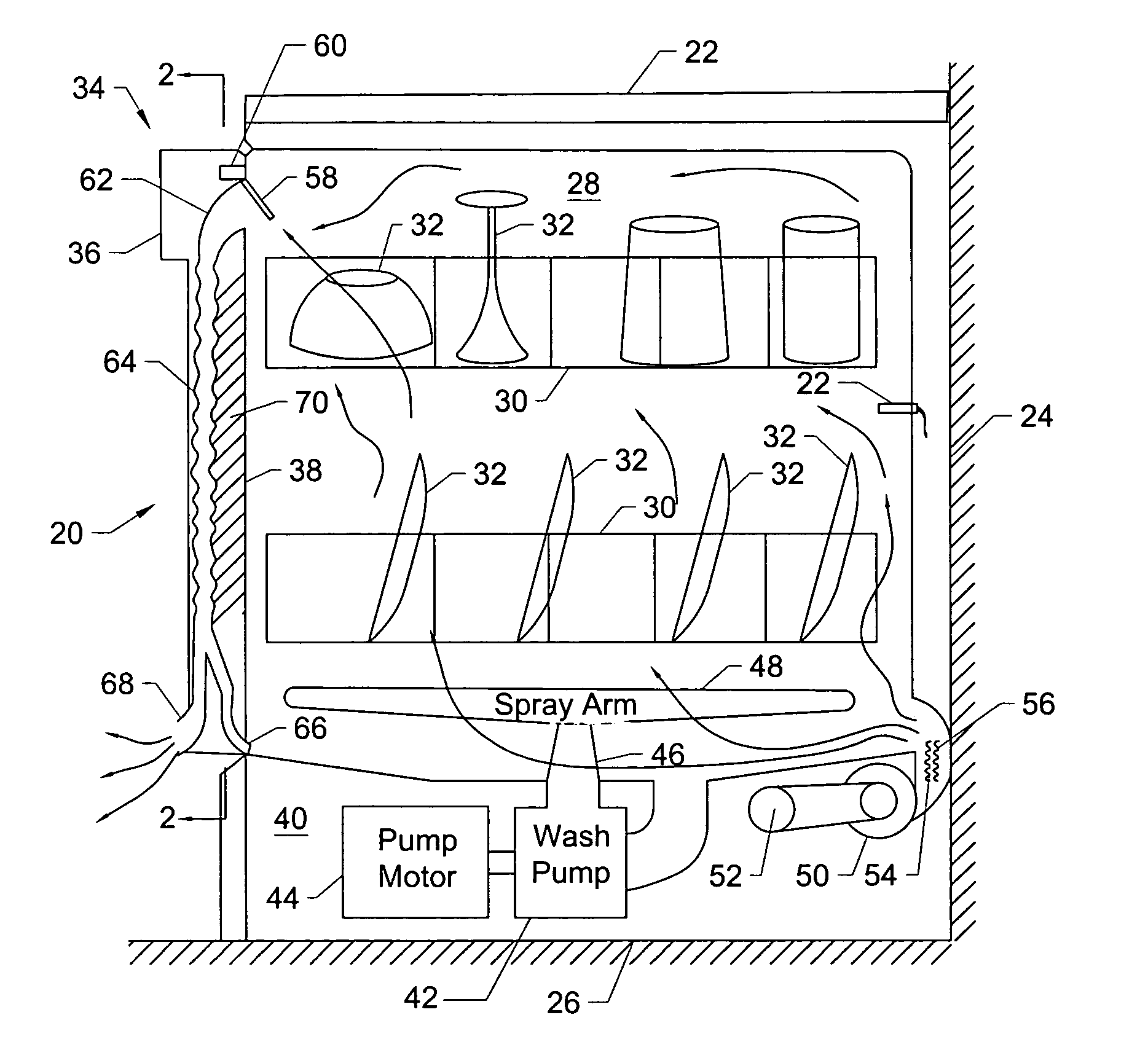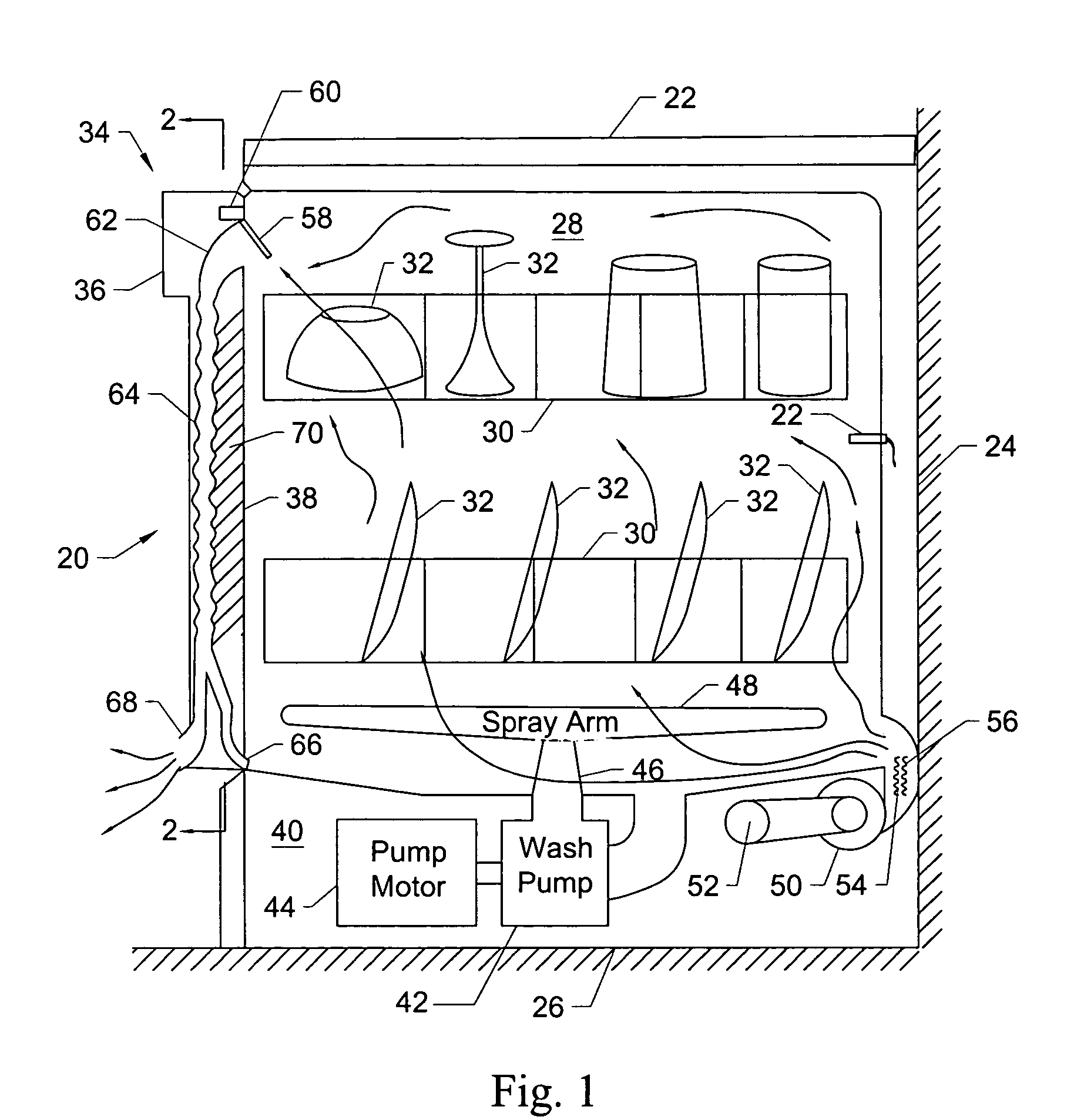Dishwasher drying system
- Summary
- Abstract
- Description
- Claims
- Application Information
AI Technical Summary
Benefits of technology
Problems solved by technology
Method used
Image
Examples
Embodiment Construction
[0011]FIG. 1 illustrates a dishwasher 20 installed under a counter 22 against a back wall 24 on a floor 26. The dishwasher 20 includes tub portion 28 defining an interior cavity holding racks 30, which carry articles 32 to be washed. The dishwasher 20 includes a door 34 of double wall construction having a front wall 36 facing the exterior and an interior wall 38 facing into the tub 28 of the dishwasher 20. Typically, the controls for the dishwasher 20 are incorporated into the door 34. For the sake of simplicity in this illustration, the controls have been omitted from FIG. 1. Positioned below the tub 28 is a lower cavity 40 that contains several operational components of the dishwasher, such as a wash pump 42 and a wash pump motor 44. The wash pump 42 and wash pump motor 44 are isolated from the tub 28 and are not exposed to wash water therein. The wash pump 42 supplies water for washing the articles 32 through a hollow shaft 46, which, in turn, supplies water to a spray arm 48, p...
PUM
 Login to View More
Login to View More Abstract
Description
Claims
Application Information
 Login to View More
Login to View More - R&D
- Intellectual Property
- Life Sciences
- Materials
- Tech Scout
- Unparalleled Data Quality
- Higher Quality Content
- 60% Fewer Hallucinations
Browse by: Latest US Patents, China's latest patents, Technical Efficacy Thesaurus, Application Domain, Technology Topic, Popular Technical Reports.
© 2025 PatSnap. All rights reserved.Legal|Privacy policy|Modern Slavery Act Transparency Statement|Sitemap|About US| Contact US: help@patsnap.com



